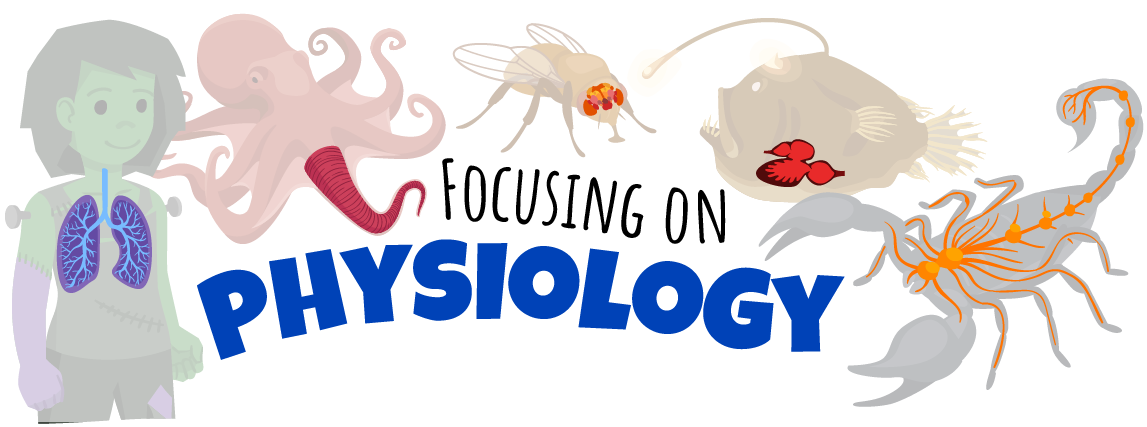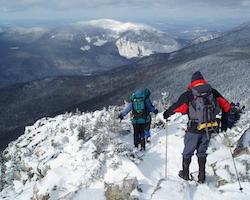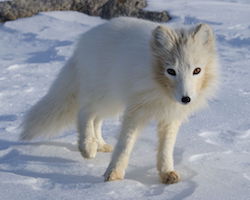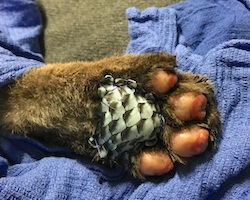
Focusing on Physiology
You take a breath, and air travels in through your nose or mouth, filling your lungs, and delivering oxygen to your body. Every day, you can breathe anywhere from 17,000 to 30,000 times. Some days you might not think about a single breath, but have you ever thought about what your body needs to do to breath? To digest food? To walk?

The study of how our bodies work is called physiology. Physiologists study everything from how molecules are used by cells, to how your organs work together to let you digest food or make decisions.
The shapes, sizes, and structures (also called forms) of everything from cells to organs often give clues to how they work (their functions). The link between anatomy (the structure) and the physiology (how it works) is something that physiologists find everywhere.
For example, when you breathe, nerve cells in the base of your brain send signals to rib muscles and the diaphragm (a big muscle between your chest and abdomen), which then contract or relax. How quickly you breathe depends on things like how much oxygen you need, and hormones like adrenaline. So, when did we start to think about how bodies work?
History of Physiology

People have been interested in how our bodies work for a long time. Aristotle (384-322 B.C.), an ancient Greek philosopher, was among the first people to think about the structure and function of human bodies. He was also the first to study animals and groups of animals in an organized way. He recorded observations on over 500 different animal species.
Hippocrates, another Greek who lived around the same time, was an early thinker in medicine. He and his peers were the first to record observations about illnesses and disease. They also thought about how to fix illness with drugs, diet and exercise, and how our bodies need balance to work correctly. This may have been the first appearance of the idea we would now call homeostasis, or a healthy balance within the body.
Hundreds of years later, Galen made many discoveries about how the body works. He used this knowledge to perform new surgeries and medical techniques, such as setting bones. Amazingly, Galen did this without ever dissecting a human body; he studied non-human animals to figure out how physiology works in general, which was a new approach at the time.
Many of the ideas that started from early thinkers became the foundations of how we understand physiology today. But it was only within the last 200 years or so that people really focused on how humans are related to other animals. They realized that by studying animal physiology, they could better understand how these structures evolved. The study of how the bodies of different animals work is called comparative physiology.
Finding Balance: Homeostasis

You might take things like growing or surviving for granted, but many pieces of your body have to work together to make those things happen. The cells which make up our bodies can only survive within a certain range of conditions. If your body gets too hot or cold, for example, then your cells will start to die.
All the different parts or systems in your body need to stay in a healthy range of conditions to survive. To do this, your body must be able to detect your current state (like your body temperature, water levels, and more), and bring it back into a healthy range. This idea of a healthy range is called homeostasis.
Think about it – what happens when your body becomes too cold or too warm? Your body will work to bring you back to a more regular temperature. When you are too cold, your body slows blood flow to places where you lose heat quickly (like your arms and legs), and you start to shiver to produce body heat. When you are too hot, your body needs to get rid of heat, so blood rushes to your skin, and you begin to sweat. These responses work to bring your temperature back into a healthy range.
Homeostatic mechanisms that work to keep certain conditions in the body allow animals to live in a variety of environments. Some environments are warm, like the rainforest, or cold, like the tundra. Some environments can be hot during some parts of the year and cold during others (like temperate rainforests). Environments also differ in how much rainfall they get, how much oxygen is around (like underwater vs. out of water), the amount of light (like the canopy of a rainforest vs. the forest floor), or the number of diseases.

Through natural selection, animals have evolved physiologies that are well matched to their environments. Some comparative physiologists even think that the diversity of environments may be why there are so many different animals. By studying these animals, we can uncover the incredible ways that animals evolved to deal with physiological problems.
Fitting in with Physiology
What are some ways that animal physiology has evolved to fit the environment? Even though humans need to drink plenty of water each day, zebra finches can live without drinking water for years by getting small amounts of water from food, and by getting water from metabolism. This is extremely important, as they live in very dry parts of Australia that experience long droughts. They also reduce water loss by making very concentrated urates (that white part of bird poop) instead of more dilute urine, which is what humans make. Natural selection has shaped their kidneys to match this environment.
Pythons and some other snakes can store enough energy so they don’t have to eat for over a year. They can eat huge meals, taking days or weeks to digest, then store energy from those meals. With low energy costs, fat stores can last them a long time. Even after long periods without food, when they do eat, they only need to get a few big meals to restore that energy. Natural selection has shaped their digestive systems and metabolisms to match how often they get meals.

Some fish and salamander populations go into deep caves and never come out! Over generations, they have adapted to darkness and, due to mutations, some individuals have stopped growing eyes. Instead, the sensitivity of their other senses is increased. After many generations, the whole population no longer grows eyes. Natural selection has shaped their visual system to an environment that doesn’t have light.
Comparative Physiology and Humans
You might be wondering why studying comparative physiology is important. Besides the value of learning about animals because they are interesting, studying animals can help us develop medical techniques and treatments.

For example, by studying fish skin, researchers learned that it has a lot of a protein called collagen, which helps repair wounds. Since that discovery, medical doctors (especially in places which have limited medical supplies) have been using sterile fish skin to treat skin burns.
Animals can also be excellent models for studying a specific problem. For example, squids have giant neurons, which make experiments on how nerves work very easy. Squid nerves helped us understand how the nervous system works in humans. Based on how much we can learn from comparative physiology, it is no wonder that people are more interested in it than ever.
Additional images via Wikimedia Commons. Crabs in hands by Will Merydith.
Karla Moeller earned her PhD in Biology at Arizona State University. She is an animal physiologist, a science writer, and a children's book author.
Pierce Hutton is a PhD candidate at Arizona State University, where he studies the effects of urban environments on physiology.
Read more about: Focusing on Physiology
Bibliographic details:
- Article: Focusing on Physiology
- Author(s): Karla Moeller, Pierce Hutton
- Publisher: Arizona State University School of Life Sciences Ask A Biologist
- Site name: ASU - Ask A Biologist
- Date published:
- Date accessed:
- Link: https://askabiologist.asu.edu/explore/animal-physiology
APA Style
Karla Moeller, Pierce Hutton. (). Focusing on Physiology. ASU - Ask A Biologist. Retrieved from https://askabiologist.asu.edu/explore/animal-physiology
Chicago Manual of Style
Karla Moeller, Pierce Hutton. "Focusing on Physiology". ASU - Ask A Biologist. . https://askabiologist.asu.edu/explore/animal-physiology
Karla Moeller, Pierce Hutton. "Focusing on Physiology". ASU - Ask A Biologist. . ASU - Ask A Biologist, Web. https://askabiologist.asu.edu/explore/animal-physiology
MLA 2017 Style

You may think you couldn't be more different from some animals, like these crabs. But all animals share some of the same physiology.
Learn more about the similarities and differences in physiology of different animals as you create your own creatures in the game Frankenstein's Lab.
Be Part of
Ask A Biologist
By volunteering, or simply sending us feedback on the site. Scientists, teachers, writers, illustrators, and translators are all important to the program. If you are interested in helping with the website we have a Volunteers page to get the process started.
